Climate Change and the Average Gardener: Reality Check

I took a walk around the garden a few days ago, making a mental list of what needed pruning or moving this weekend and was horrified to see so much winter damage on my broadleaf evergreen shrubs and even some evergreen perennials. Many of these plants have been in the garden for 7 years or more so would be considered established. We didn't even have that much snow! What had happened?
After a quick chat with local horticultural colleagues the consensus seems to be that many of these plants were so stressed by our unusually hot, dry summer (extended periods of 100'f+) and associated drought that they just weren't able to with stand our prolonged December freeze for over a week followed by another deep freeze recently and many plant tissues were therefore destroyed. (Oddly enough the plants mostly looked OK until the most recent freeeze). Indeed many local gardeners are reporting above-average damage on their broadleaf evergreens. I guess this is what climate change looks like to the everyday gardener. I didn't do anything different – but the climate did.
For context, I have a drought tolerant garden with no supplemental water/ irrigation. I'm in Duvall, Washington, which is USDA zone 7 in theory; 6b in reality. My soil is clay but well amended and mulched with arborist chips or Fertil Mulch every April to suppress weeds and conserve moisture.
So my question – like yours – is "will it live?"
Here's a rundown of some key plants, showing you what the damage looks like, what I'm going to do (if anything) and how this may impact future plant choices.
Cinnamon Girl Distyllium

Cinnamon Girl distyllium is the most cold hardy variety I know of and certainly seems to be living up to its reputation at least once it is established.
I expected the worst if I'm honest. When young, this Cinnamon Girl distyllium showed extensive cold damage (brown leaves) although it recovered in spring. This is in an exposed, west facing area but has been in this location for about 3 years I think. It did surprisingly well.
I know the brown leaves will drop but it will look fine again quickly. It's a keeper!
Winter daphne
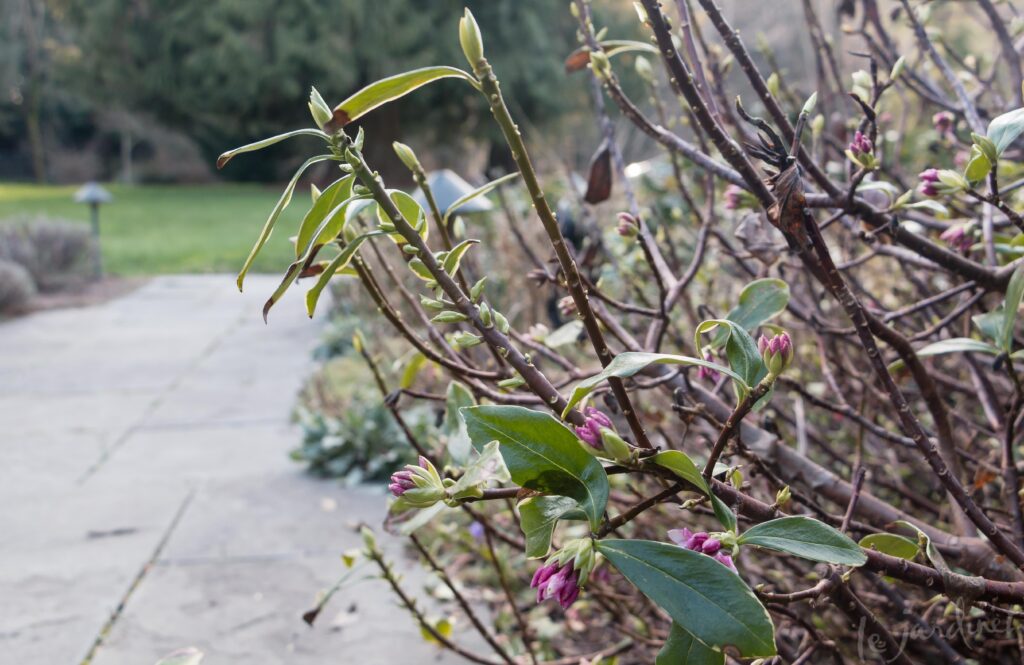
Many leaves have been lost but this winter daphne is still blooming and new leaf buds are ready to open
Winter daphne (Daphne odora 'Aureo-marginata) gets hammered every winter, especially if it snows. Branches protected by the house eaves are fine but the exposed branches suffered significant defoliation. Yet it still blooms and quickly throws out new leaves. Its a workhorse and of course the fragrance is outstanding. Planted in a west facing exposure about 10 years ago I wouldn't hesitate to replant this if it eventually croaks.
Andromeda
I completely lost one mature Mountain Fire andromeda (Pieris japonica 'Mountain Fire') and many others look really bad. I'll scrape the bark to see if the totally defoliated one is still alive but may just pull it out anyway.
I'll see how well the others recover – the compact Little Heath looks pretty ugly right now. If they show promise I may prune for shape but give them a chance as I have always loved these deer-resistant evergreens. They are all in dappled shade.
Gilt Edge silverberry
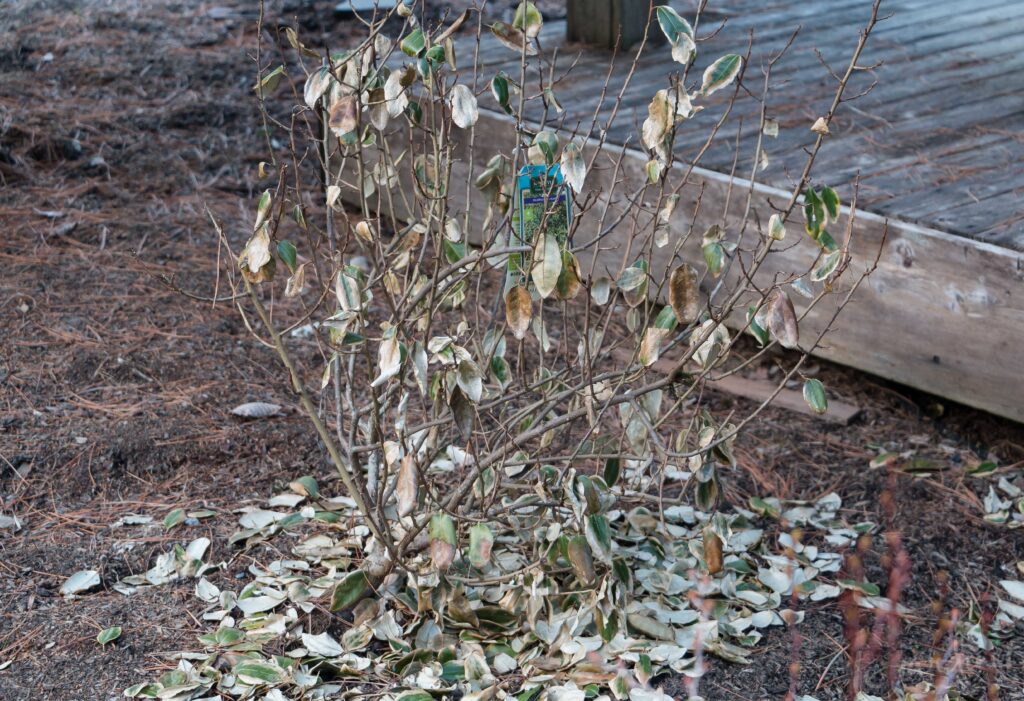
Ugh – Gilt Edge silverberry in an east facing, exposed location. Really hoping it grows new leaves in spring
It was so upsetting to see the bright gold and green leaves of Gilt Edge silverberry (Elaeagnus x ebbingei 'Gilt Edge') on the ground instead of the stems. I often lose 10% of the foliage after a hard freeze but some of these are fully naked right now. I'm going to see if they grow new leaves from the axils as I so appreciate the way they do equally well in sun or shade and have good deer resistance, unlike Euonymus which is similar in appearance.
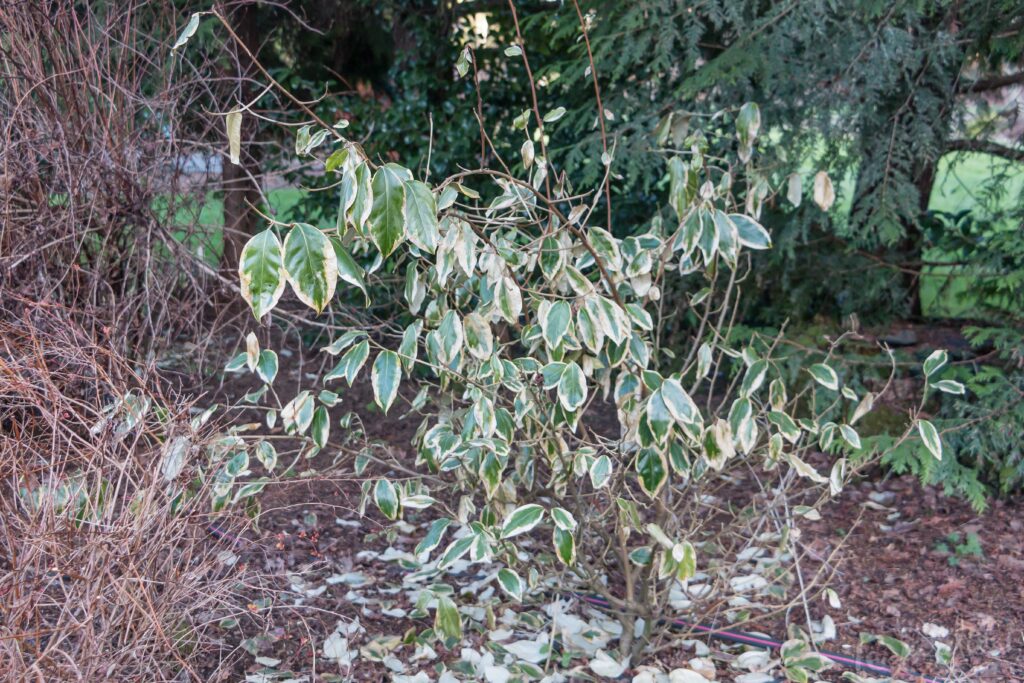
This Gilt Edge silverberry is under tall conifers and looked beautiful until about two weeks ago. Not quite as bad as the one in a more exposed spot but still pretty rough
Shrubs in full sun and significant shade lost foliage (almost) equally. The ones in containers on my deep, west-facing porch look better – but I suspect will still drop most of their leaves before summer.
I'm still using this in designs because I've always seem it grow new leaves and have considered it semi-evergreen in colder spots. It's such a valuable shrub I really want it to work!
Box honeysuckle
Twiggy (Lonicera nitida 'Twiggy') was the first to go totally brown, and since this trio of shrubs were in a prime location were unceremoniously yanked out yesterday. I may replace with Kaleidoscope abelia there.
Lemon Beauty lost a variable amount of foliage – more in wetter soil than drier. Interestingly, where it had reverted to solid green, the growth appears damage free.
I'll cut back severely damaged branches hard when I'm sure we won't get any more frost and see what happens.
Robb's Euphorbia (wood spurge)
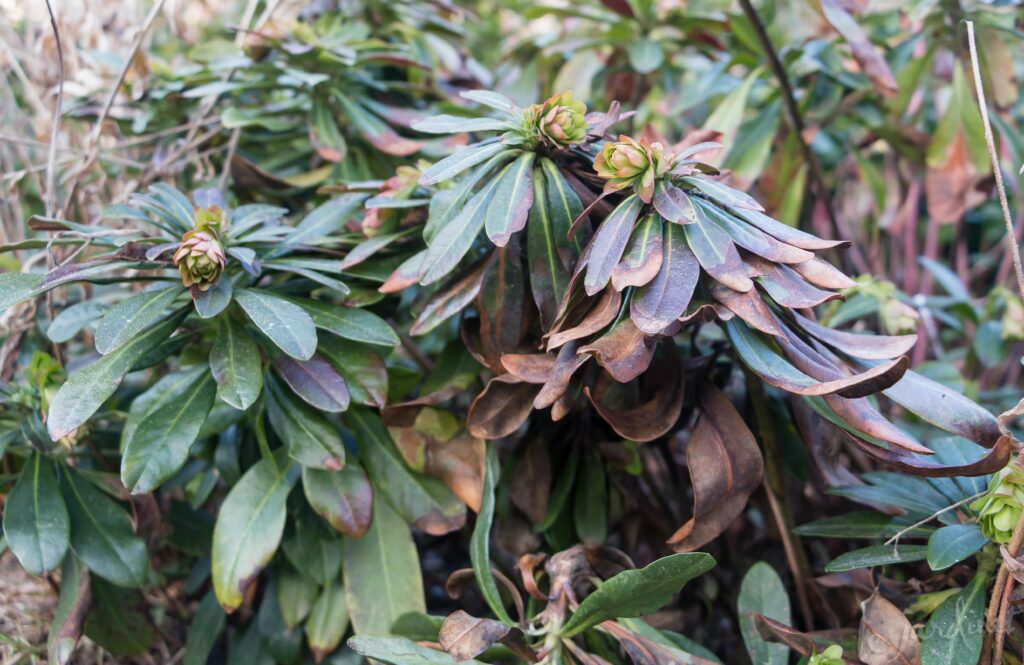
Thankfully the chartreuse bracts of this wood spurge will soon distract the eye from the dead leaves – which will likely drop soon anyway
The brown leaves will drop but I have to admit the wood spurge ( Euphorbia amygdaloides var. robbiae) looks a mess right now. I planted this as a vole deterrent, knowing it could spread. Not sure that it was successful or worth it! Yet I do love the spring colors. I'm on a watch-and-see with this. It is planted with a western exposure, knowing it will eventually be under the shade of the paperbark maple (Acer griseum).
And there's more:
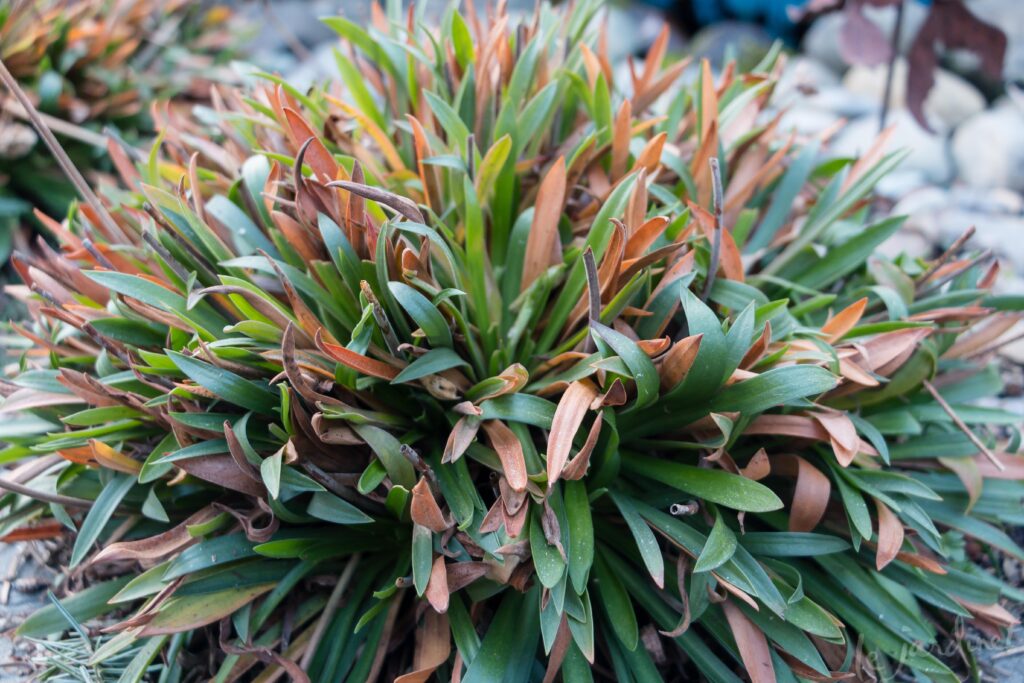
The problem with sea thrift is that the brown leaves seem to stay on the plant. Maybe I can pretend it is a new variety??
I also noted significant damage on evergreen barberry, evergreen viburnum, and sea thrift (Armeria maritima, an evergreen perennial).
What's the answer?
I know many folks will say that planting natives is the answer but I disagree. These new weather patterns are NOT historically typical for the Pacific Northwest so our native species will not necessarily thrive in the excessive heat/drought we seem to be experiencing. (Our Western hemlocks and Western red cedars are proof of that already). Here in Seattle we still have heavy winter rains so looking to more Mediterranean plants isn't the answer either as they would rot in my clay soil.
Perhaps I have to use fewer broadleaf evergreens and more deciduous selections like gardeners in the Mid-West and North East do? Rely more on super hardy conifers for evergreen interest?
What do you think?
I'd love to hear your stories – do leave a comment and be sure to state where you are based so we can all glean ideas. This is a whole new type of gardening.
Subscribe to Receive Blog Posts
Gardening inspiration delivered right to your inbox from Le Jardinet
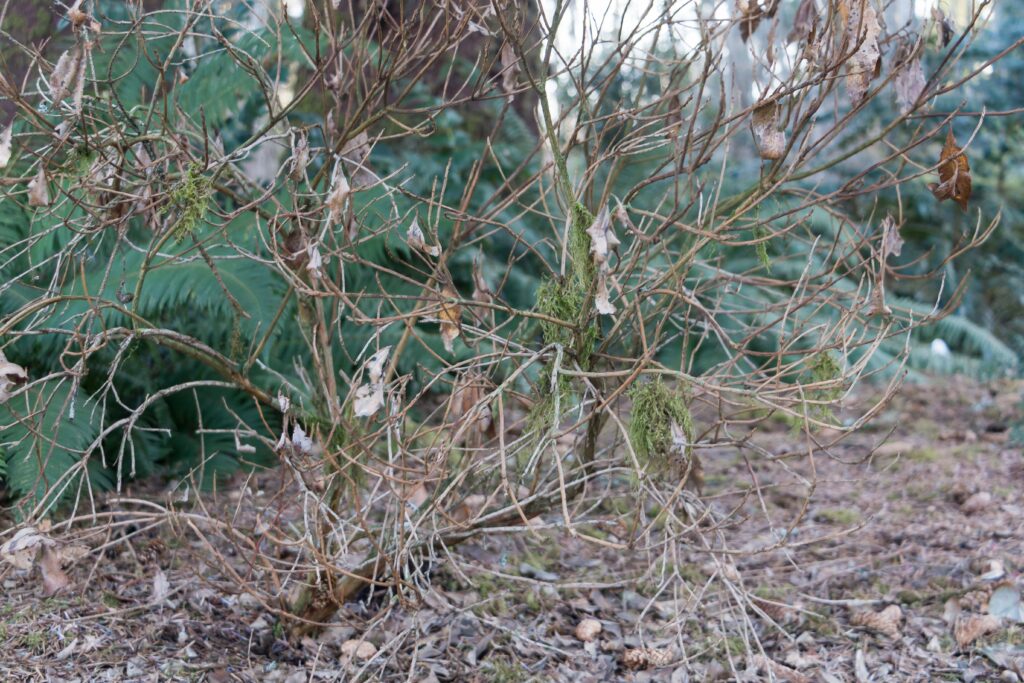
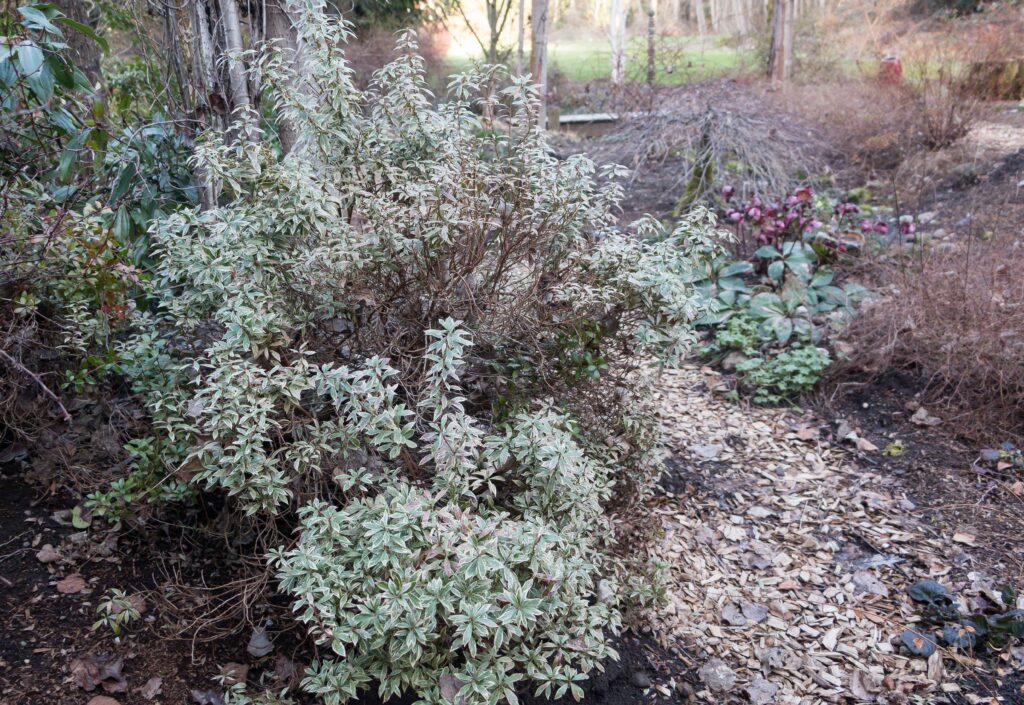

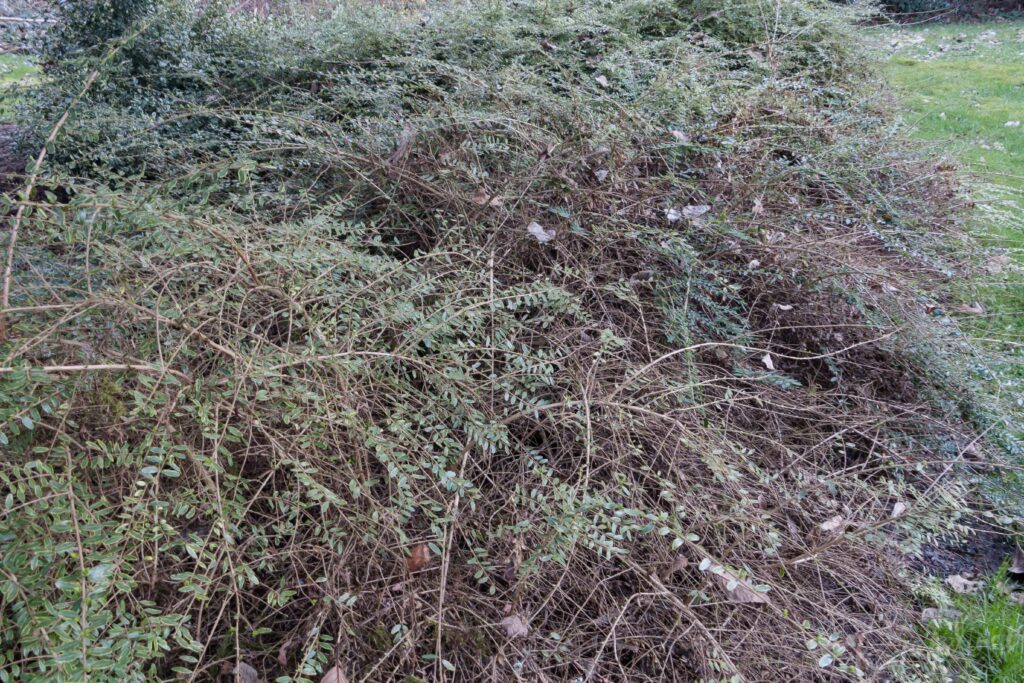
Interesting timing of your article, since many of my Wheeler's dwarf pittosporum tobira look very unhealthy (except for one that I replanted last year), and have lost a large amount of leaves. I actually googled this morning to try to find out if they will survive. Do I pull them and replace them, or will they produce enough leaves to look healthy again? I live in Portland, Oregon so very similar weather patterns as your garden.
Hi JoAnne, your climate is milder – I can't grow that Pittosporum at all! Wheeler's dwarf pittosporum has mid-sized leaves and I do know that with Hebes, the smaller the leaf the hardier it is – I suspect the same holds true for these shrubs.I would say give it until early May to see if new leaf buds appear in the axils – and let me know!
I live in Zone 8b. I have 2 Cinnamon Girl dystillium that have been in the ground for 3 years. One looks like yours and the other is almost totally brown with some green leaves toward the bottom. My Coppertone Dystillium are fine. They are all roughly in the same area of the yard. I saw a lot of leaf loss on my Kaleidoscope abelia and Lonicera ligustrina “Lemon Beauty'. Those seem to be leafing out some now.
I'm encouraged to hear your Lemon Beauty has grown new leaves – I hope mine does too. I thinkj you will find your distyllium will be fine even after shedding those brown leaves. I was surprised how mine recovered when that happened a few years ago.
Thanks for sharing your experiences